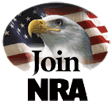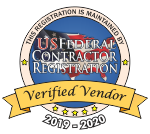Unlike most other classes at Gunsite, LRR, PRU, PR7 and XLR have very specific requirements for suitable equipment. In general, any serviceable firearm of the appropriate type and caliber will suffice in the other pistol, rifle and shotgun classes. LRR, PRU and PR7 demand equipment of the highest quality, with some very specific attributes. These classes are NOT Long Range Hunting classes. The skills, tactics and equipment used in these classes does not correspond with practical hunting skills, tactics and equipment. Do not bring a tennis racket to the golf course. This brief is intended to help in the selection of equipment for these classes. If you have any questions about equipment for these classes, please call the office and ask to speak with one of the instructors for the class. Let’s start by listing some requirements.
Rifles
The rifle chosen for the LRR/PR classes should be capable of at least 1 MOA accuracy. That is, it should produce a five shot group 1” center to center at 100 yards, using the ammo you will use in the class. It must also be rugged, reliable and portable. The rifle should weigh no more than 10-15 lbs with all equipment in place (slings, scope, bipod, etc.). Heavy bbl contours serve to delay heating, and may result in less shift of point of impact, but the overall weight of the system must be considered. Barrels are normally free-floating, that is, have no contact with the stock more than an inch or so forward of the receiver. Caliber should be .308 Win or similar. Other full size rifle cartridges such as .30-06, .270, etc., are also usable, but match grade ammo is often a hand loaded only proposition. Heavy magnum calibers are specifically prohibited due to damage inflicted on our targets. They are also not conducive to a good learning experience. In any event, calibers must be non-belted, non-short mag, non-magnum with bullet weights no higher than 180 gr and velocity of no more than 2900 fps. The rifle must be equipped with a sling, either a carry strap or loop style. Good factory rifle selections include the Remington 700 VS or Police, Savage 10FP or 110FP, Winchester Stealth, Steyr SSG PI or PII and the FN SPR series. These are Tactical style rifles.
Telescopes
The rifle must have a telescope sight. There are relatively few scopes that are suitable for use on a precision rifle. First, the scope must have adjustments for windage and elevation that may be moved by hand, not tools. These adjustments fall into two categories, target knobs and bullet drop compensators (BDC’s). Target knobs should be calibrated in ¼, 1/8 MOA or Mil click values, with tactile and visual markings. The knobs need to be rugged, or have caps to prevent damage. BDC’s will be quicker to select values for various ranges, with less chance of error, but by design will be somewhat less precise. The adjustment system must contain enough windage and elevation adjustment to zero the rifle at the maximum working range. For most .308 rifles, this is 600 to 800 yards. This will usually require AT LEAST twenty-five MOA of up elevation adjustment AFTER the scope is zeroed at 100 yards. For telescopes lacking enough adjustment, a sloped mounting base will often compensate by letting you use remaining down adjustment values to gain required elevation. If the telescope is nearly bottomed out, leaving only three to five MOA of down adjustment available after a 100 yard zero, you will have all the up adjustment the scope has available for long range zeroing.
The scope must have a suitable reticle design. The preferred reticle is the Mil Dot, TMR, MOA or similar style, since it’s the most versatile. Regardless of measurement, the reticle must have measuring capabilities.
The scope must be of a usable magnification. Fixed powers of 6x to 10x are popular military designs, for simplicity and ruggedness. Police are better served by a variable in the 3.5x-10X or 4.5x-14x ranges. Magnifications over 15x are seldom usable in the field due to mirage distortion. A focus, or parallax adjustment is required. Lens caps should be considered a requirement, to protect the lenses when not actually shooting.
The scope must be properly mounted. It makes little sense to mount a scope costing $800 to $2500 using $25 mounts. The Leupold Mark 4 style is the preferred mounting system. Steel, four screw rings, with a large crossbolt and no windage adjustment make for a very sturdy and trouble free mount. Bases may be one or two piece, but upgrading to 8-40 screws from the 6-48 standard is highly advised. Every class strips or shears one or more 6-48 base screws, causing loss of zero and frustration as the rifle goes to the gunsmith for repair.
Cleaning equipment
You need a full length one piece cleaning rod, jags, brushes, patches and solvents. That, plus a bore guide to fit your rifle and lens tissue and cleaner for the scope lenses complete the minimum requirements. We schedule cleaning breaks every 20-30 rounds, so plan accordingly. Do not bring a cheap sectional cleaning rod, it will only cause damage to the bore. Do bring both powder and copper solvents, most solvents do one or the other well, but not both. Have some way to carry all this around to the ranges, since we will often clean right on the firing line. A length of the proper diameter PVC pipe with end caps works very well as a rod case. A field cleaning system such as an Otis kit is very handy.
Binoculars/Spotting Scope
Good optics are costly, but well worth the expense. A set of pocket type compact binoculars in the 6x to 10x range will work well for the observation tasks. Full size 10×50’s are appropriate as well. A good spotting scope on a portable camera tripod is necessary when acting as spotter. With it, one can see impacts, read mirage and wind, plus identify suspected targets far better than through a riflescope. The most practical scope will be compact, armored, and waterproof and have a magnification between 12x to 40x. If you select a fixed power scope, stay in the 20x to 25x range, since mirage can be a serious problem at higher powers. A variable permits dialing up the best power for the conditions, but will generally be larger and heavier. If the spotting scope can be obtained with a Mil Dot/TMR/MOA reticle installed, you can use it to range and call corrections to the shooter much more accurately. This reticle in the spotting scope is necessary. Get a small collapsible sturdy tripod. Consider Manfrotto carbon fiber or similar. Once again, remember you have to carry all this gear around. Bottom line; to get the most out of this class, a quality spotting scope with milling reticle and good tripod are an ABSOLUTE NECESSITY for each team.
Load bearing equipment
Get a good military type backpack, commercial style pack or shooters bag that can carry ALL your personal equipment. Ideally, you’ll be able to strap on the pack, sling the rifle and walk from one firing point to another with your hands free and ALL your gear. That includes all the above plus water, snacks, sunscreen, etc., everything you want with you when you go to shoot. If you don’t NEED it, don’t pack it. A drag bag can serve to haul the rifle and optics, ammo and perhaps cleaning gear. Using the shoulder straps will let you carry it like a backpack and still carry a small bag or waist pouch for miscellaneous small gear. A pack mat, a version of a rifle case that unfolds to a shooting mat can be very useful, putting everything else into the rucksack and carrying the rifle in the mat by the handles.
- The Harris bipods have 99% of the sniper market, for good reason. The most practical models are the S series, either the BRM or LM models. The S series units have a swivel that lets you adjust for uneven ground. The BRM and LM models have notched legs, permitting simple height adjustment while in the prone position behind the rifle. The main difference is height, the BRM is 6” to 9”, the LM is 9” to 13”. Also consider a Pod-Loc for the swivel bipods. Of course Atlas Bipods are excellent choices as well.
- A small notebook or logbook is essential for recording scope adjustments, round count and keeping notes.
Non-essential, but should have items include:
- A small pocket calculator, is useful for ranging and wind formulas.
- A small compass is handy for the stalking problems. It’s pretty easy to get totally disoriented when crawling head down for a long distance. It is also very helpful in describing the location of targets to your partner.
- A sandbag for supporting the buttstock is nice to have. Make one from a pair of dark boot socks, filled with poly plastic pellets obtained from the local arts and crafts or fabric store. Used to fill rag dolls and bean bag toys, it’s light, waterproof and just the right consistency.
- A scope level, or anti cant device is helpful on the long range field shooting problems. This is a small bubble level attached to the riflescope body or base so it can be seen in firing position. It insures the scope crosshairs are level, as canting the rifle can have a severe effect on the point of impact at longer ranges.
- A shooting mat of some type makes for a more comfortable shooting position. Keep it compact and light.
- A Mil Dot Master is a slide rule that helps determine range on known size targets. This is a very helpful too. Invaluable tool.
- A Camelback or similar product or some type of canteen is necessary for carrying your water to the different ranges.
- Other items to consider include: small digital camera, gps, elbow/knee pads, ammunition carrier, Otis kit, sunscreen, gloves, camouflage netting, long sleeve shirt.


